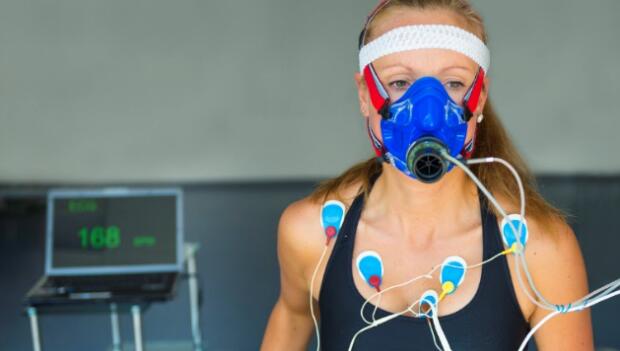
You can't be a runner or distance running coach without hearing about VO2 max. But what is VO2 max? Although it sounds like a disease—"Honey, you better stay away; I have VO2 max"—VO2 max is the maximum volume of oxygen that your muscles can consume per minute. It is therefore referred to as aerobic power since it's a measure of the rate at which oxygen is consumed.
VO2 max is considered to be the best single indicator of a person's aerobic fitness. Although a high VO2 max alone is not enough to attain elite-level performances, it gains one access into the club. A runner simply cannot attain a high level of performance without a high VO2 max. It is especially important for the middle distances (800 to 3,000 meters), events that are run at or close to 100 percent VO2 max. Physiologists, myself included, are fascinated with the use of oxygen. Indeed, VO2 max is the most often measured variable in exercise physiology.
Running Events Near You
More: An Overview of Energy Sources
What Determines VO2 Max?
Cardiac output, the amount of blood pumped by the left ventricle of the heart per minute, is dependent on stroke volume and heart rate. Stroke volume, the amount of blood pumped by the left ventricle of the heart per beat, is determined by:
- the return of blood back to the heart through the venous circulation (venous return)
- the heart's ability to contract quickly and forcefully
- the amount of pressure in the left ventricle (preload) and in the aorta (afterload)
- the size of left ventricle.
The larger the left ventricle, the more blood it can hold; the more blood it can hold, the more it can pump.
How Much Oxygen Can Muscles Use?
How much oxygen can be extracted and used by the muscles is dependent on mitochondrial and capillary volumes. The more capillaries that perfuse the muscle fibers, the shorter the diffusion distance for oxygen from the capillaries to the mitochondria, which are microscopic "energy powerhouses" that contain the enzymes involved in aerobic metabolism. The number of enzymes is also important since enzymes, through their effect on chemical reactions, control metabolism.
Oxygen extraction is reflected by the difference in the amount of oxygen going to the muscles through the arterial circulation and the amount coming out through the venous circulation (a-v O2 difference). The a-v O2 difference is determined by the convection of oxygen through the muscle capillaries and its diffusion from the capillaries to the mitochondria.


